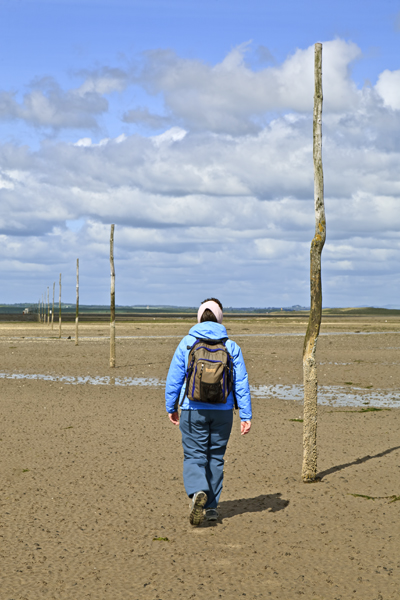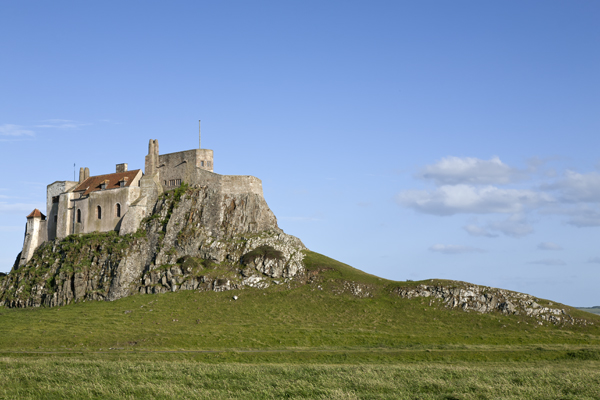Last year my wife and I visited and photographed a number of castles in Northumberland, a region located in England’s northeastern corner abutting the North Sea. Besides its numerous castles, Northumberland also features wide beaches and tall sand dunes, rugged cliffs, rolling hills, and quaint fishing villages.
Because the castles there are relatively close to each other (10-14 miles apart), and to get a better feel for the region, we decided to walk from one to the next, photographing along the way and staying in small inns overnight. The plan was to put together a story about our walk and sell it to a photography publication after returning home.
Starting in Berwick-Upon-Tweed, a charming village on the banks of the River Tweed, we walked south along the coast towards our final destination in Warkworth. We used a service to carry our bags from inn to inn, so during the day walks we only carried my camera gear, snacks, rain gear (we were in England!), and a map.
Every morning we got up early to photograph at first light. Then, after the shoot, we returned to our inn for a traditional English breakfast consisting of tea (or coffee), eggs, beans, mushrooms, and tomatoes (or a variation thereof). Besides fueling our bodies for the day ahead, breakfasts were a great opportunity to meet other travelers (most were not walkers) and learn about local history and customs from our hosts.
Although there were few, if any, restaurants or cafes between villages, there were plenty of golf courses, and we quickly learned that walkers were welcome to patronize their clubhouses for lunch or a snack.
Like in the U.S., clubhouse fare included sandwiches, salads, and (unlike the U.S.) scones, preferably covered with fresh jam and clotted cream. For dinner it was always easy to find a pub or small restaurant serving local fare like fish and chips or other surprising selections (I had great risotto at the pub on Holy Island).
My favorite part of the walk was the three miles separating England from Holy Island, which is only accessible during low tide via a paved causeway or by walking on wet sand and following tall wooden poles (the so-called Pilgrim’s Way).
Low-tide tables are readily available in the area, and they are also posted at both ends of the causeway. It was exhilarating to walk on the soft, wet sand, thinking we were trekking on the bottom of the sea.

After returning from the trip I wrote an article about photographing the castles of Northumberland and submitted it to a national photography magazine.
Because the article was geared towards photographers, it included gear recommendations, the best times to photograph a particular subject, and other photo tips. As usual, I also included an “If You Go” section with information about lodging options, helpful websites, and so on, plus an “About the Author” paragraph about my background and experience with photography and travel writing.
All these items were selected for publication, a bonus since this particular publication pays by the page.
Travel Photography Resources
5 Dos and 2 Don’ts for Travel Photography
Take Great Photos And Get Paid More For Your Travel Articles
Turning a Photography Hobby into a Monthly Income
The Pros Of Selling Your Images As Stock Photography
16 Mobile Photography Tips And Tricks Every Photographer Should Know
Camera Buying Guide: How to Buy the Right Camera
Travel Writing Resources
How To Become A Travel Writer – The Easy Way
Easy Steps To Landing Your First Byline As A Travel Writer
Marketing For Travel Writers: 5 Ways To Get Started
22 Travel Story Ideas To Get You Published


